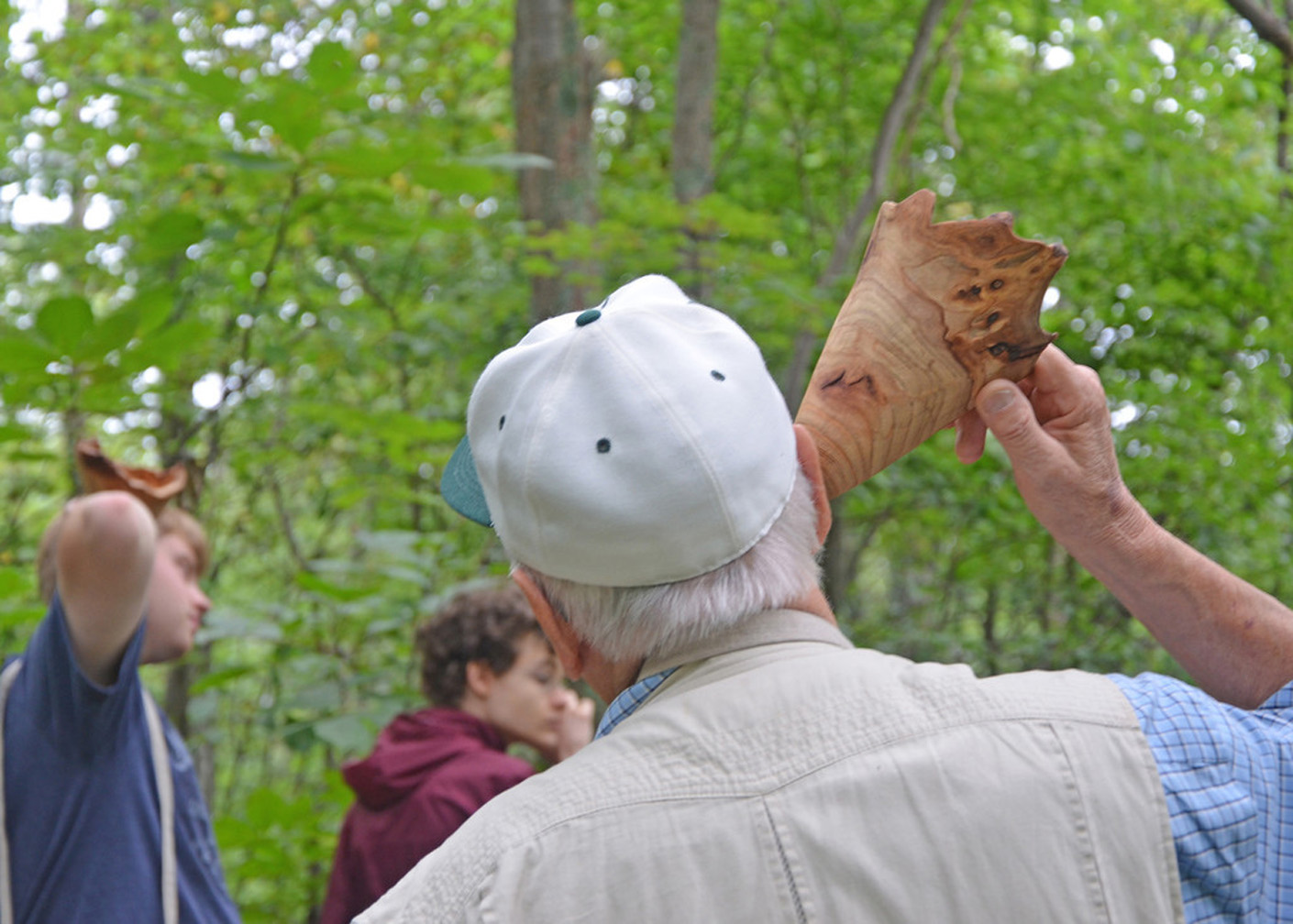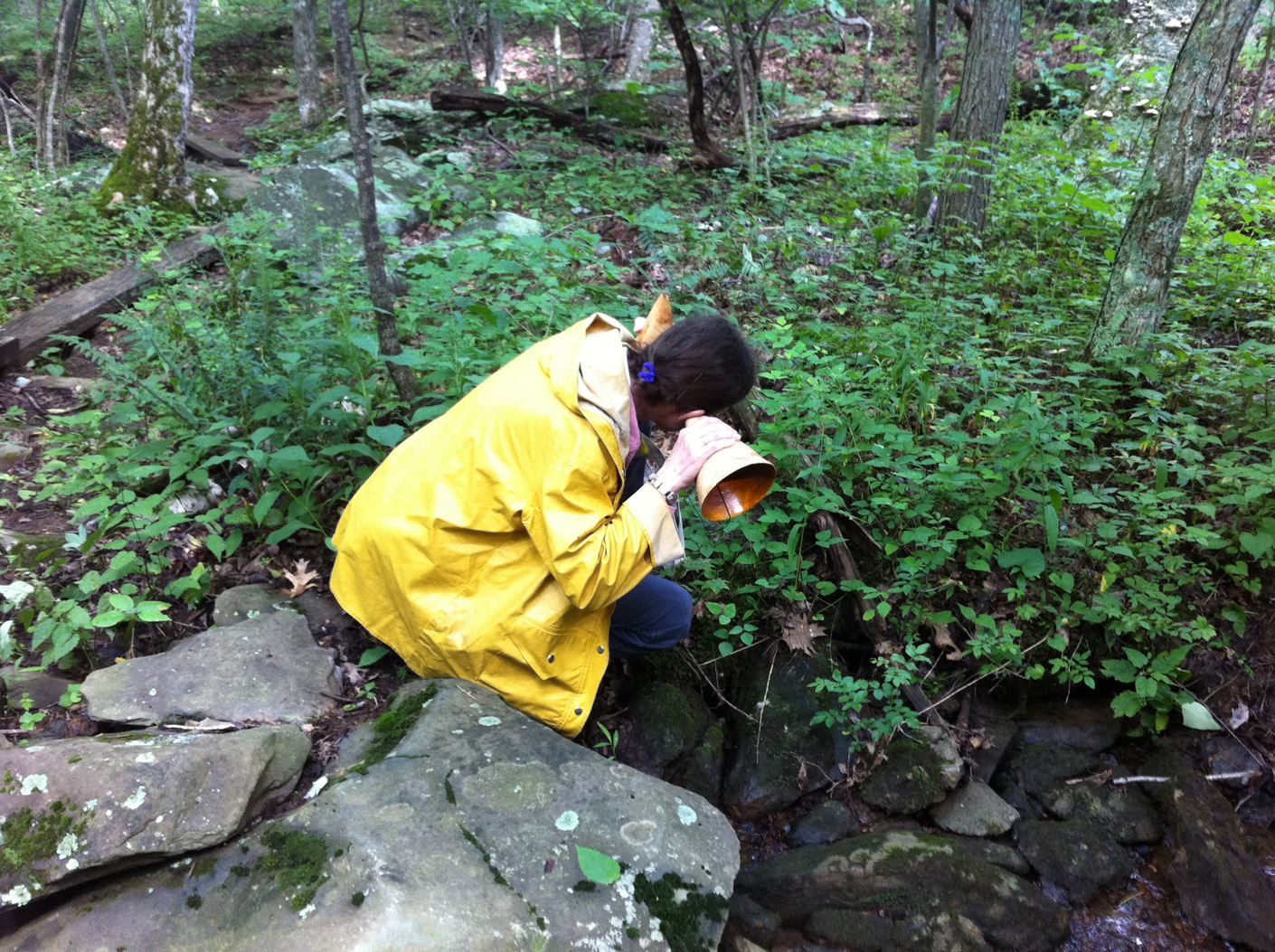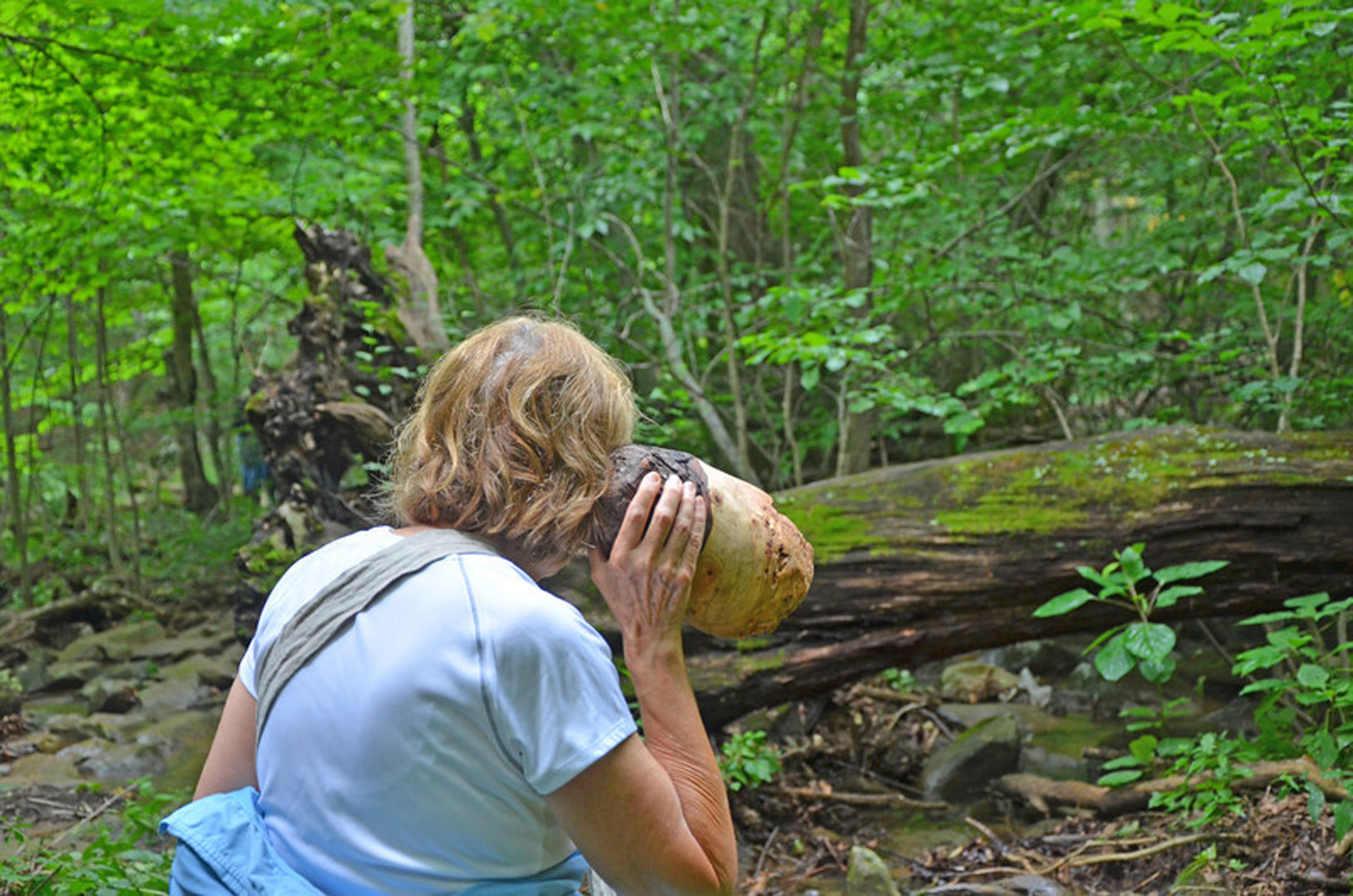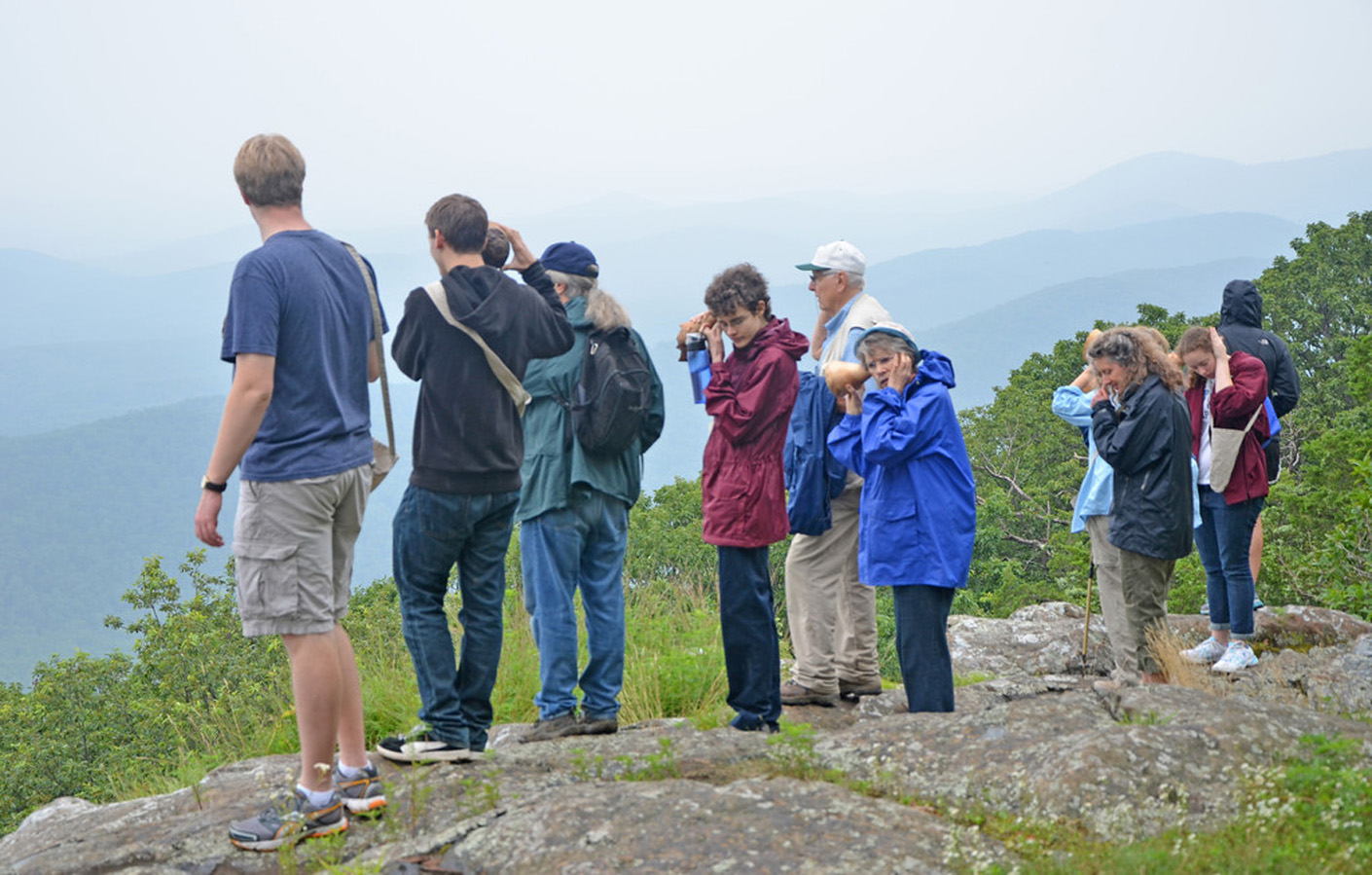Walking Wintergreen: Listening Horns
2013
"There is a geographical quality to listening…Of all the senses, hearing most resembles a contraption some ingenious plumber has put together from spare parts. Its job is partly spatial…Sounds have to be located in space, identified by type, intensity, and other features."
–Dianne Ackerman, A Natural History of the Senses
The 2013 Wintergreen Summer Music Festival in the Blue Ridge Mountains of Virginia commissioned these small wooden horns. They were originally conceived and carved for a series of moderate hikes called the Sight and Sound Walks that were open to the public and conducted by the artist and composer Robert Carl on Black Rock Mountain at Wintergreen Resort and at Paul’s Creek in Nellysford, VA. The species of wood selected for the horns was guided by those trees that grow in the region of the Blue Ridge Mountains in Virginia, though certainly Elm, Maple and Oak grow in widely spread area across North America and elsewhere. Each Listening Horn may be considered a small sculpture prepared for opening a new way of experiencing aural and visual phenomena.
I make my work in response to a kind of deep mapping conducted by exploring and coalescing into sculptural form the cultural and physical aspects of a place. This includes geophysical formation, indigenous architecture, material culture and the materials each landscape yields. Our ears provide a conduit from this outer world into the inner realm of each individual. By placing an ear to the small end of a wooden horn one may listen more closely to sounds produced by birds, frogs, insects and other animals, human-made sounds, the wind as it rustles leaves and branches, and, especially in the Blue Ridge, to water as it flows over rock ledges, through troughs in boulders and running through pebbles or gravel. It takes time, patience and concentration to hear in a new way. Listening Horns provide a way of "cupping our ears to the earth".
Imagining an experience, sculpting or composing it, in such a way that viewers must walk to discover it is, in itself, an act overlaid with many intentions. The use of Listening Horns on walks places emphasis on the contemplation of a place and its sounds. The thorns focus and subtly (or at times not so subtly) amplify sound. They are extremely directional and bring the sound at which they are aimed closer to the listener while excluding other sounds in the environment. The effect is subtle, more like the resonance of a musical instrument than electronic amplification. Each horn has its own special range and unique qualities of sound resonance as well as unique visual qualities. On the Sight and Sound Walks we often traded instruments to experience this. By using the large or small circular aperture at either end to sight and frame an image the Listening Horns may also be used to isolate visual phenomena. In this way the play of moving light and shadow may become a miniature "film" or the brilliance of green mosses, the patterns of lichens spread on a boulder, may become miniature abstract pictures. The emphasis is on increasing sensory perception through concentrating, focusing and isolating particular sounds and sights.
In the future, perhaps noise pollution from technological devices, personal and otherwise, and from our ever-expanding cities will be so increased that sound quality might form the basis for retreats from the urban. The concept of the park as a quiet zone is not unthinkable. Walking with a small wooden horn in hand creates a situation in which viewer/participants may take a sort of journey to discover that which is available all the time, to anyone, but seldom noticed. As each Listening Horn makes its way into a variety of soundscapes; or is used as a visual sighting instrument, it becomes part of a larger sculptural experience. The creation of this dispersed "situational sculpture" is intended to create a multi-layered experience for participants. Concentrating on small visual fragments of great beauty in the environment can alter our perception of place. Walking with a focus on sound, listening and close scrutiny of the immediate environment invites a slower pace and an attendant increase in sensory perception. We engage in a kind of heightened perception that may filter into our daily lives. Since the "situational sculpture" consists of a dispersed experience, it calls upon the viewer to remember and mentally assemble all the parts in order to experience the whole. Listening as part of a geographical experience creates a process of assembling sound into an aural picture of the landscape; likewise with viewing visual fragments. They contribute to a new and broader vision of the landscape.
Of central concern in this work is the cultivation of simple awareness. Alongside this is a recognition of the human need to break from the oftentimes-mechanical rhythm of contemporary life. An intentional cultivation of our perceptual facilities allows frequent conscious retreats from the usual patterns of our fast-paced lives, and nurtures our ability to facilitate this. It’s amazing to think that the use of a simple, humble device such as a hollowed out cone of wood from an injured tree might lead to increased sensitivity to the natural world. To walk in nature is restorative. It encourages quietness, intimate communality with nature and with others. Our ability to find moments of beauty in the everyday may increase the sense of joy in our lives, and perhaps catalyze a greater interest in the health of our life- supporting planet.
Kansas City, Missouri
8 August 2013





